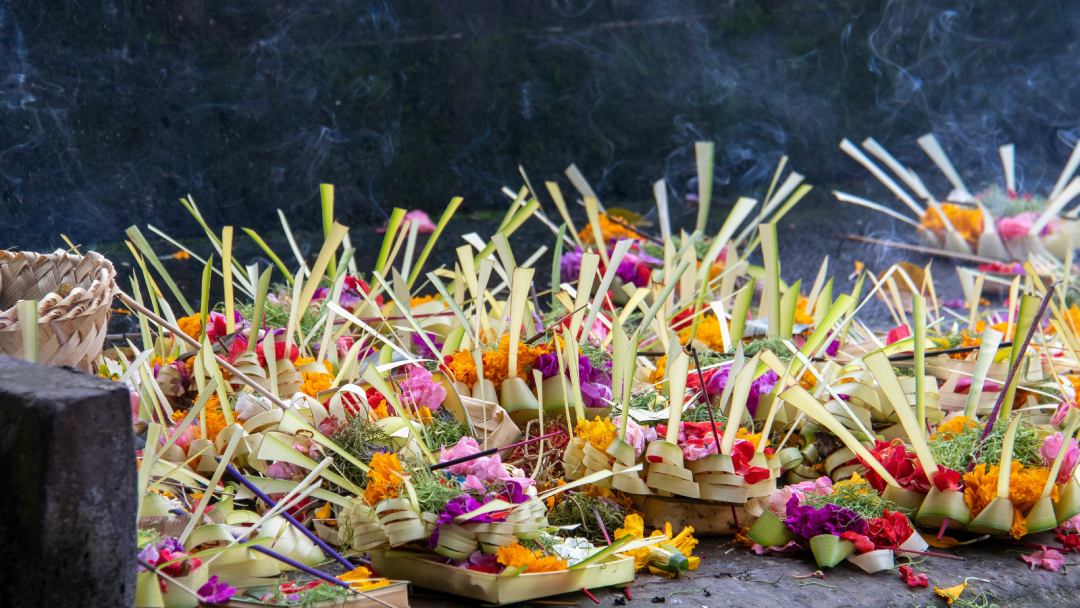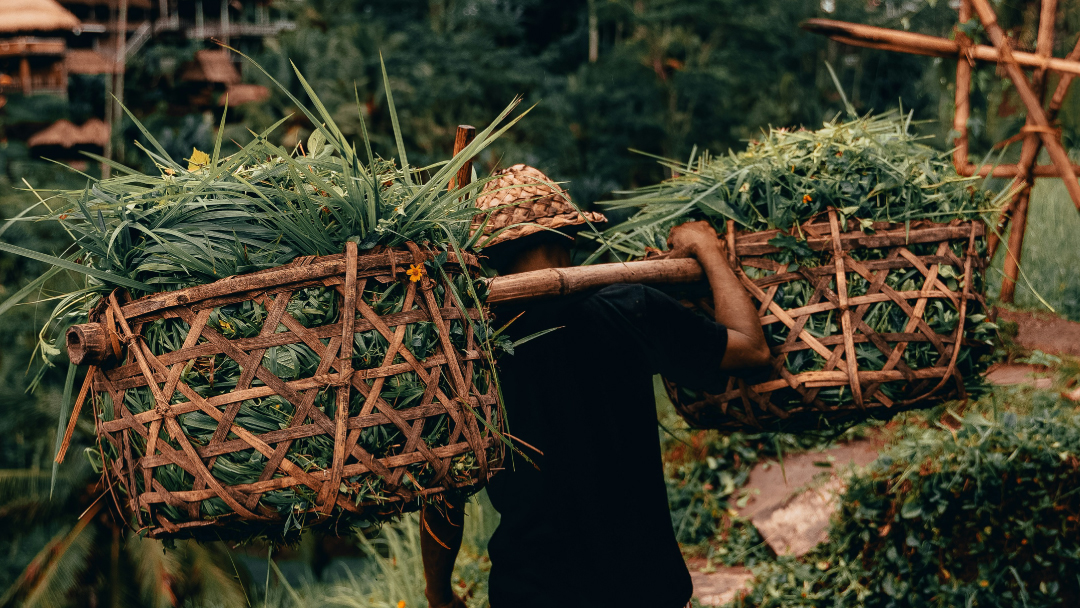Asian vanilla and the land of the gods
When people try Bandoeng’22, they often remark on its familiar taste and aroma, yet struggle to pinpoint exactly where or when they’ve encountered it before. Many mention memories of vacations spent on the island of Bali, Indonesia. We explain that pandan, widely used in various forms throughout Bali, might be what they’re recalling.
The versatile use
Pandan (Pandanus amaryllifolius) is an aromatic tropical plant that holds a special place in the culinary, cultural, and medicinal traditions of Bali, Indonesia. Known for its sweet, floral fragrance and vibrant green hue, pandan is an indispensable ingredient in many Balinese dishes and plays a significant role in the island’s cultural practices. This article explores the diverse uses of pandan in Bali, highlighting its importance in the culinary arts, traditional medicine, and cultural ceremonies.

Culinary uses of pandan in Balinese cuisine
Sweet and Savory Dishes
Pandan leaves are a key ingredient in Balinese cooking, used to infuse both sweet and savory dishes with their unique aroma and flavor.
Sweet Dishes:
Klepon: This traditional Balinese snack consists of glutinous rice balls filled with palm sugar and coated in grated coconut. The rice balls are often colored and flavored with pandan extract, giving them a vibrant green hue and a distinctive taste. For more information and recipe click here.
Dadar Gulung: A popular dessert in Bali, dadar gulung are pandan-flavored green pancakes rolled up with a sweet coconut filling. The pandan not only adds color but also enhances the overall flavor of the dish. For more information and recipe click here.
Bubur Injin: This black rice pudding is a staple dessert in Bali. While the black rice provides a dark, rich base, pandan leaves are often added during cooking to infuse the pudding with a subtle, fragrant aroma. For more information and recipe click here.
Savory Dishes:
Nasi Pandan: Pandan leaves are frequently used to flavor rice in Balinese cuisine. The leaves are either tied into knots and cooked with the rice or blended to extract their juice, which is then added to the rice, resulting in a fragrant and colorful dish. For more information and recipe click here.
Pandan-Wrapped Grilled Fish: Pandan leaves are used to wrap fish before grilling, imparting a unique aroma and keeping the fish moist and flavorful. For more information and recipe click here.
Beverages
Pandan is also a popular ingredient in Balinese beverages, providing a refreshing and aromatic twist to traditional drinks.
Pandan Tea: Fresh pandan leaves are boiled in water to create a fragrant tea that is both soothing and aromatic. It is often enjoyed hot or iced, sometimes with a touch of honey or lemon. For more information and recipe click here.
Pandan-Coconut Drink: Combining pandan with coconut milk and sugar, this beverage is a popular choice for its refreshing and slightly sweet taste.
Cultural significance of pandan in Bali
Pandan leaves hold cultural and spiritual significance in Balinese society. They are often used in various religious ceremonies and traditional practices.
Offerings and Decorations
Canang Sari: These daily offerings to the gods, made by Balinese Hindus, often include pandan leaves. The leaves are woven into small baskets or trays to hold flowers, incent, rice, shredded pandan leaf and other symbolic items.
Temple Decorations: During festivals and religious ceremonies, pandan leaves are used to create intricate decorations and adornments for temples and altars. Their vibrant green color and pleasant aroma add to the sanctity and beauty of these spiritual spaces.
Traditional Crafts
Weaving: The leaves of the pandan plant are used in traditional Balinese weaving to create mats, baskets, and other handicrafts. These items are not only functional but also serve as beautiful examples of Balinese craftsmanship and artistry.
Conclusion
Pandan plays an integral role in the culinary, medicinal, and cultural practices of Bali. Its versatility and unique characteristics make it a cherished ingredient and a symbol of the island’s rich traditions. Whether flavoring a sweet dessert, soothing a stomachache, or adding beauty to a temple offering, pandan leaves are an essential part of daily life in Bali, reflecting the deep connection between the people and their natural environment. As modern culinary trends continue to embrace traditional ingredients, the use of pandan in Bali serves as a testament to its enduring appeal and cultural significance. The aroma and taste of Bandoeng’22 will remind you of your visit to Bali.
About Bandoeng’22
Bandoeng’22 is a multi-award-winning liqueur with the distinguished taste, scent and color of pandan. Established in 2019, it’s made in the Netherlands and is a tribute to our Dutch-Indonesian heritage. Bandoeng’22 is the liqueur to give cocktails and desserts an Asian twist. For cocktail recipes with our liqueur click here.


























